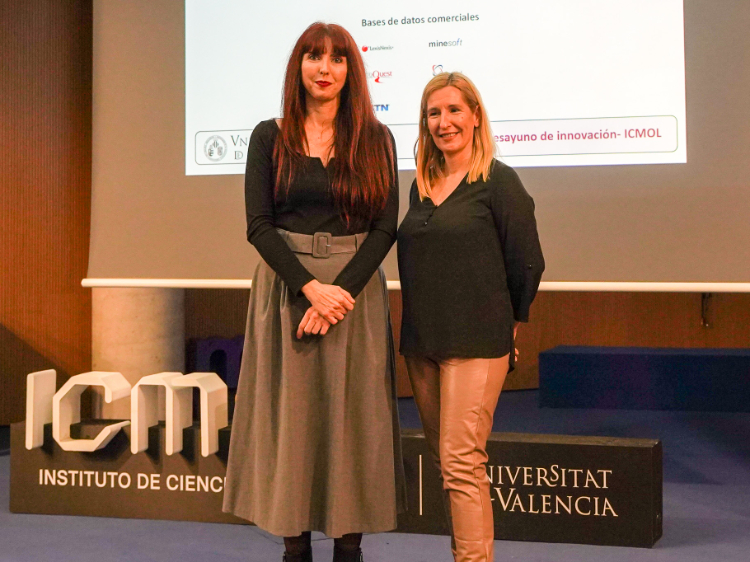
The possibility of legally protecting works of ingenuity and creativity, as well as the results of scientific research through industrial and trade secret patents were the focus of a new session of the Innovation and Industry Breakfasts organized by the Institute of Molecular Science (ICMol) of the University of Valencia with the support of the Valencian Innovation Agency (AVI) and the Valencian Government.
Two exhaustive presentations and a lively question and answer session completed an exhaustive review of the basic mechanisms of intellectual property in research, such as the differences between patents, utility models, trade secrets and other forms of protection. "Patenting a result or an innovation is something that a scientist will face sooner or later," said Antonio Alberola, presenter of the event and member of the Innovation and Transfer area of ICMol.
The presentations were given by Marta Garcés and Eva Escuder, PhD in Chemistry and Physics respectively, from the Transfer and Innovation Service of the UV, whose objective is to transform research results into innovations, providing them with economic and social value. The conference was very useful, for example, to understand what can and cannot be protected or what should be taken into account if you want to protect a result.
Before an audience of dozens of researchers, both young and more established, Garcés and Escuder started with the most basic concepts and ideas about patents. For example, who is legally considered the inventor of a patent? An inventor is any person who has contributed intellectually to the conception of an invention or result".
Marta Garcés emphasized a direct piece of advice to aspiring "inventors": "First patent and then publish," she advised those present. The issue is key because the law protects the novelty of the patent from the date of application. And preserving "novelty" is fundamental because it is one of the three requirements to be able to legally protect results. The other two conditions are "inventive step" and industrial applicability.
As a consequence of this legal precept, for example, if any detail of the invention were to be published, the novelty of the result would be broken and, therefore, it would not be patentable. It is also considered essential to carry out an exhaustive background search in databases of articles and specific patent databases, such as those of the Spanish Patent and Trademark Office, Patenscope or Espacenet.
During the discussion with the attendees, Escudero stressed the importance for the Universitat de València of the efficient management of its intellectual assets, generated in research centers and institutes for the adoption of innovative solutions and to develop new technologies.
The #DesayunosICMol program is part of the activities of relationship with companies organized by the Innovation and Transfer team of ICMol, led by Antonio Albero and Francisco Marqués, and supported by the Valencian Agency for Innovation (AVI) of the Generalitat Valenciana and the Feder Funds of the European Commission.
"Project co-financed by the European Union through the Operational Programme of the European Regional Development Fund (ERDF) of the Valencian Region 2021-2027".

